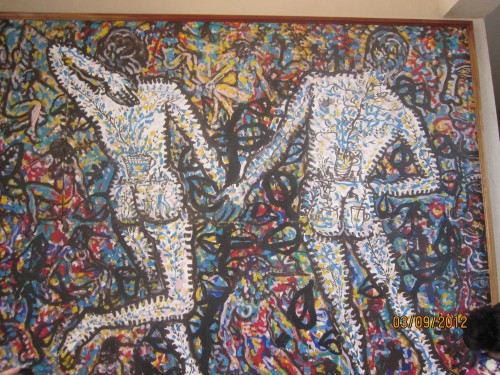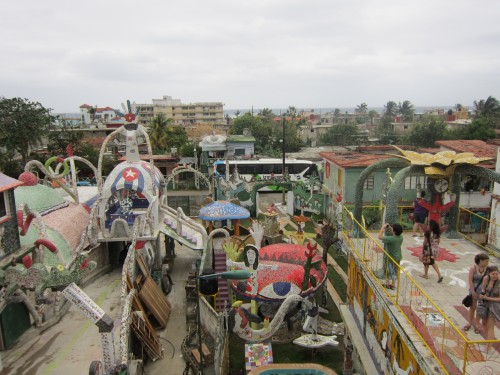What Do We Value?
May 3, 2012 by nialexandre
When today’s generation thinks Communism, we tend to think Soviet Russia. Grey streets, repressed people, cold wars, doomed planning. From our seats in high school history class, full of boredom and angst, we’re taught that the Communist system was a) Destined To Fail and b) Responsible for Plunging the World into the Longest Continuous State of Political and Military Tension Ever (Wikipedia). Even when we study the propaganda images of both camps, Capitalist and Communist, in a what-we-want-to-think objective manner, we still emerge with the distinct impression that the US, despite it’s faults, was of course going to emerge victorious. And that’s because, if nothing else, the USSR was oppressive and didn’t believe in Basic Human Rights©.
In the current era, America’s general opinion of communism hasn’t changed that much. Our greatest economic challenger happens to be a communist nation (and admittedly we have problems with their HR track record too) and anti-communist rhetoric is still all over political cat fights, one of the great engineers of the American Identity. Communism is viewed as dangerous and oppressive, period. Even at renowned liberal arts schools that are known for their open mindedness, telling someone you’re going to a communist country usually begs the question “is that safe?” A fair question since many countries world wide are at war, have armed civil unrest, or are otherwise extremely volatile.
Cuba is not one of them. Our only basis for assuming that Cuba is a dangerous country is that Cuba is A Communist Country, and one that apparently hates the US.
So you get ready. You read, you prepare for questionings, you learn what not to do. And then you land in this country and are blown away.
The West permeates every country its citizens readily have access to. The only places it doesn’t are the only places that provide an alternative perspective to the global social and political situation of our time. One of those places is Cuba.
A good way to take the social pulse of Cuban people is to look at its governmental organizations and what they do, since the government is involved in essentially everything. I was expecting very authoritarian and colorless agencies that dealt mostly with money, food, and infrastructure, with a few artsy organizations here and there to say that they took care of the people but that were in reality a propagandist hideout. I was surprised, so much so that it’s still haunting me two weeks later. The main prides and joys of the Cuban Revolution are free health care and education for all, and it is in the name of these that the Revolution was able to weather many a challenge. But in addition were two smaller governmental aspects that probably weren’t necessary to keep the Revolution running, but that nevertheless received support and funds in a way that is very illustrative of what the country as a whole values, or is trying to value.
The first is the government’s focus on gender and sexuality. In the past 30 years there has been an increasing effort to spread knowledge and acceptance of these issues across the island both directly, through the governmental branch CINESEX, and indirectly, through funds given to specific initiatives such as the Mejunje house. In a Machismo society, notions of homosexuality, transexuality, and women’s rights are brought out into the open by the government. “Incredible achievements” (quote by Marielle Castro and the director of Mejunje) have been made and, in the big cities at least, there is definitely a sense of a growing liberated community. Progress still needs to be made, but the fact that the government officially privileges these Basic Human Rights is commendable.
The second initiative is in the propagandist hideouts mentioned above. Because of the nature of our trip we did focus a lot on artistic initiatives so our perspective might have been somewhat biased, but the areas that we visited were so full of energy and enthusiasm that I want to believe such endeavors were wide spread. There were of course areas that seemed to function mainly as tourist attractions, such as Fouster’s multicolored tile fortress and the decades old pottery workshop in Santa Clara. But what really struck a cord was visiting the Korirnakao artists in Cienega de Zapata. They were beautiful, talented, and full of good humor. They clearly didn’t get a lot of visitors since our arrival seemed to be as much an attraction to them as they were to us. What was astounding though, was the fact that the government financed most of the project – which was relatively large in scale, encompassing a variety of forms from dance and music to plastic arts. Not only that, but the artists that went to Korirnakao were then sent out to isolated communities to perform and display their art. Now, I lived for 4 years in a mostly abandoned rural village on top of a mountain, and each day was spent praying for some sort of external stimulation, preferably youthful and inspiring. Meeting these people as a semi-adult was fascinating, I can only imagine what a lonely teenager or an aging elder must feel when that troupe comes marching into their town.
There’s no question in my mind that we are taught some wrong lessons about Communism. The giant country out of which it sprang monopolizes all of the variations of its expression. In Cuba, in many areas at least, the shades Communism took were not grey; they were rich, undiluted and full of life. Upon returning to America, and seeing how we treat art, and sexuality, and creativity, and inspiration, and difference, and women, I wondered what it really was that’s the most important to this country. What colors of ourselves are we painting, and what colors will be painted in the history books?
Leave a Reply
You must be logged in to post a comment.

